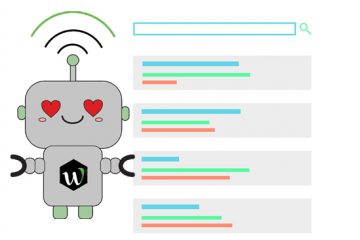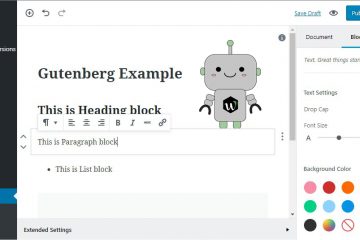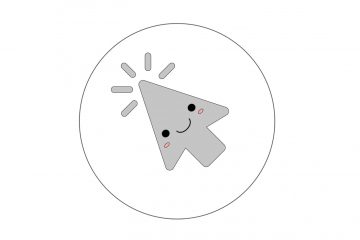[vc_row][vc_column][vc_column_text]The first thought that any new business has is how they plan to acquire new customers.
Now, you may feel inclined to have an answer, especially for investors. But, this is actually the wrong question you should be asking. Instead, ask:
“How is your business plan going to evolve as you grow?” New businesses fail every day because they can’t adapt to change. If you have a failed marketing strategy, it eventually ends with a lot of spend with little return on your investment.
Your business plan needs the flexibility to evolve as your business grows.
You could tell your investors that you plan to do a lot of cold calling, SEO, and paid advertising. But, these are all static options that assume everything is going to go right for you.
Most startups that succeed do so in small bursts. That means you have to devise a strategy that plays on this fact.
So, what do you do to grow your client base?[/vc_column_text][/vc_column][/vc_row][vc_row][vc_column][vc_single_image image=”4837″ img_size=”medium”][/vc_column][/vc_row][vc_row][vc_column][vc_column_text]
Customer Acquisition: Goals
The next step is to Define your goals.
Your goals will be another way to devise the perfect strategy for your business. Keeping with the example above, let’s say your ultimate goal is to get as many customers to your brick-and-motor store as soon as possible. Great, your startup has its first goal. It’s simple and gets straight to the point. You’ve already identified your target demographic. Now, let’s say that we researched and found that the target demographic is male comic-book fans, ages 21-40.
Now, you need to set those first two steps into action in step three.[/vc_column_text][/vc_column][/vc_row][vc_row][vc_column][vc_single_image image=”4838″ img_size=”medium”][/vc_column][/vc_row][vc_row][vc_column][vc_column_text]
Customer Acquisition: Audience Profile
You need to start by charting who your perfect demographic is and what they want to see. Don’t worry so much about gaining a large following at first, worry about gaining a loyal following. These are the people that will get your message out to the world.
This process will include finding the right channels to reach your ideal audience. For example, let’s say your startup is a comic book store that also serves alcohol. Your target audience might look like a 21 and up male population with a predisposition to pop-culture and the latest Marvel movies. You might advertise at Comic-Con, creating Facebook campaigns, and making a website that merges the two platforms of booze and comics in a fun way.
This starts by creating a customer profile because that’s what you’re going to base all these decisions on.[/vc_column_text][/vc_column][/vc_row][vc_row][vc_column][vc_single_image image=”4839″ img_size=”medium”][/vc_column][/vc_row][vc_row][vc_column][vc_column_text]
Your Acquisition Funnel
Your first step is to decide what avenue you want to pursue to get traffic.
Offline or Online?
next
If online, is your traffic coming from organic or paid?
If paid, will you focus on social media or search engines?
If search engines, is your audience local or national?
You can choose to do everything at once but then you might spread yourself too thin. It’s best to approach your marketing strategies based on one funnel at a time and then incorporate them together when you have a better understanding of their individual metrics and value.
Ultimately, the big question is “where are your customers coming from?”
Let’s start by breaking down the process that a customer goes through to result in a conversion for your business. For our example, your target demographic either wants a comic book or they want to come to a bar and have a good time. This need drives them to your location when you cast an advertising net through social media and paid advertising.
Given the data collected in the first two steps, you might choose to blast sales on social media after the release of the latest Marvel movie.
Visualizing this process, you can see where your business might be weak. If it’s getting the word out, then you need to focus on your marketing strategy. If it has something to do with bringing in the wrong crowd, then your message might be off.
In either case, you need to compartmentalize your different funnels (social media, paid advertising, your website, flyers, etc.). This way, you can measure their success independently and see which ones are working and which ones aren’t.[/vc_column_text][/vc_column][/vc_row][vc_row][vc_column][vc_single_image image=”4840″ img_size=”medium”][/vc_column][/vc_row][vc_row][vc_column][vc_column_text]
Customer Acquisition: Metrics
If you don’t know your metrics you’re just following leads in the dark. How are you supposed to know how many customers you need to bring in daily to have a thriving business? This is especially true for traffic to websites.
When you just get your business running, you might not have these figures just yet.
How do you know what you need to track?
Start with your goal. In the previous steps, we established that we wanted to get more bar and comic book patrons in the door. From that, we can establish a few things as “important.”
- The number of items sold.
- What items were sold?
- Number of people through the door.
- Revenue changes from day-to-day
The next step is to rank your metrics. Obviously, cash-flow is priority number one. Collecting that data will allow you to assess the viability of your business. From there, you can go into the other items to try to improve your store based on what you customers like, what they hate, etc.
Later on, you can start experimenting with different products, but only after you have established a firm base.[/vc_column_text][/vc_column][/vc_row][vc_row][vc_column][vc_single_image image=”4841″ img_size=”medium”][/vc_column][/vc_row][vc_row][vc_column][vc_column_text]
Customer Acquisition: Tracking
You need to track everything from day one! Some of the best startups, with great customer acquisition plans, had measurement strategies in advance.
So what makes an effective tracking strategy?
You’ll start with the same process as before. Decide if you want to pursue an online or an offline strategy and then figure out how you will track the information from there.
For example, let’s say you want to track the 500 dollars you allocated to Facebook campaigns for a whole month. You would need to setup an AdWords account to see which conversions on your site came from Facebook. You would also need to make a unique identifier for the links that lead from Facebook to your website. After that first month, you can see how much money your Facebook campaigns are actually bringing back and decide if it is a worthwhile investment for your business.
Even if you don’t know your metrics yet, you really do need to keep track of all the data you can. This way, when you get your metrics down, you can pull this information out of the box and use it later on.
You can use paid tools like Google Analytics, or an acquisition channel spreadsheet to collect this data as early as possible.[/vc_column_text][/vc_column][/vc_row][vc_row][vc_column][vc_single_image image=”4842″ img_size=”medium”][/vc_column][/vc_row][vc_row][vc_column][vc_column_text]
Customer Acquisition: Analyze and Optimize Your Methods
The acquisition funnel is a culmination of bringing in traffic, tracking it, applying key performance indicators (KPI’s), analyzing it and optimizing it. This is the step where you get to analyze the data you gathered to see if you can make predictions and improvements.
Keeping with our social example, let’s say that you found your 500 dollar investment brought you back 550 dollars, which isn’t great but it also improved your following and you noticed an increase in traffic to your store. You already know how to track online traffic and conversions, which was only gaining you an extra 50 dollars on top of your investment and time (again not great). What you really want to know is if the extra foot-traffic to your physical store is a result of your Facebook efforts, in other words, branding. This WOULD be worth the time and effort.
To find out if the physical traffic to your store is coming from Facebook too, you could announce a special promotion on Facebook only that they can redeem in your physical store.
This is a simple example of how you need to analyze and use the data you collect, the next step being optimization.
A well-defined process comes from well-defined methods.
When you have ideas and document the results that’s great, but if you want to really be effective then you need to maximize the testing process. You need to organize the number of tests you do in a certain time-frame and improve your methods for gathering data. This allows you to create a system of developing and analyzing new ideas periodically.
Whenever you run one of these marketing experiments and document your results, be sure to outline your objective. This way, when something goes right, you have the resources to implement it into your standard business model.[/vc_column_text][/vc_column][/vc_row][vc_row][vc_column][vc_single_image image=”4843″ img_size=”medium”][/vc_column][/vc_row][vc_row][vc_column][vc_column_text]
Customer Acquisition: How to Stand Out of the Crowd
We’ve discussed a little about analyzing your metrics to come up with new strategies or at least improvements to your business.
The simplest example would be, the majority of your revenue comes from your unique alcohol options for the bar side of your store. Using that data, you might consider adding a few new items to the shelves or coming up with ideas to move your comic books by urging the drinkers to buy.
Since you’re a startup, a lot of these ideas will not pan out. The important thing is that you’re testing, something that most businesses stop doing when they get comfortable. This is how you stand out of the crowd. By taking small, calculated risks, you can see if there are strategies that work better for you and your business.
When you finish any of these little tests, be sure to go back and ask yourself if the experiment was a success, was it a failure, why?
Maybe your idea to display movie-trending comics didn’t pan out because your fans are more die-hard fans of the source material. Maybe your latest drink flopped because people don’t like the superhero you based the drink on. The important thing is that you understand why it failed or succeeded.
Conclusion on Customer Acquisition
As a startup, the majority of your time should be spent on customer acquisition. That’s why it’s crucial to analyze the data you receive in from day one and start digging into it.
If you really want a solid way for your business to succeed, the main piece of advice is to follow the customer. At Webcroppers, these are things we keep in mind when helping new businesses get their gears in motion.
You should always follow these general steps:
- Define your business goal.
- Build your customer profile
- Organize your acquisition funnel
- Analyze and implement the data
- Optimizing your strategy based on the results
By assessing each strategy and analyzing the data you get, you can make efforts to improve and build your audience over time.[/vc_column_text][/vc_column][/vc_row]


